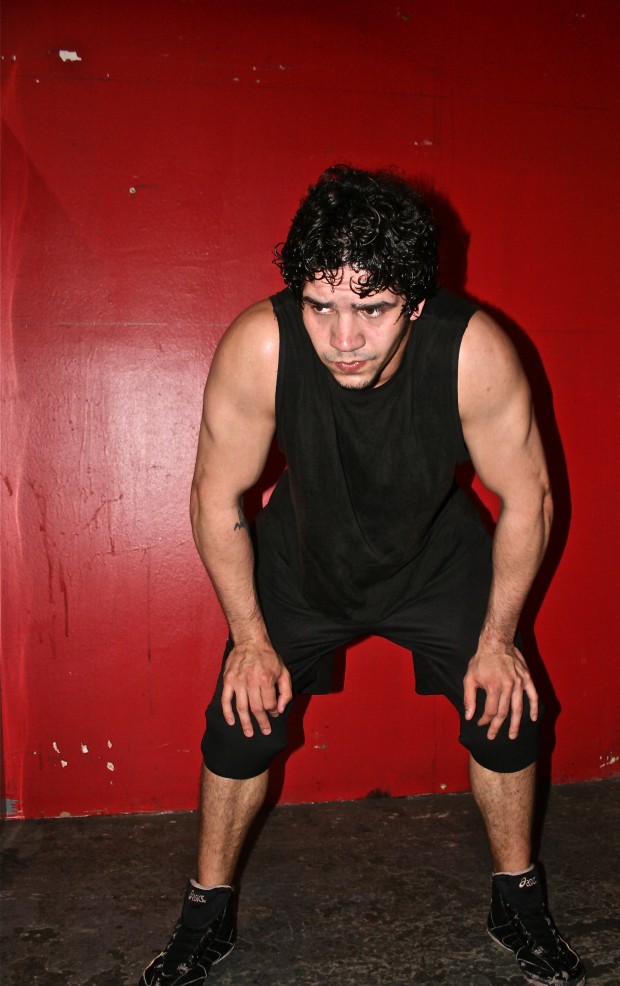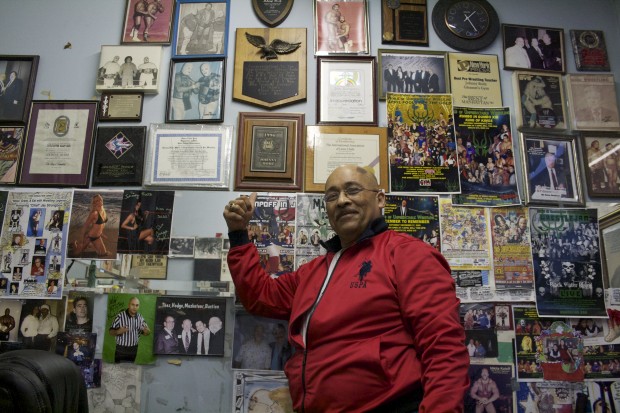
George Santiago always wanted to be a professional wrestler. As a kid, he’d scurry to his brown couch in the living room of his home in Borough Park, Brooklyn, and watch the Monday Night Wars every week. His 42-inch tube television often acted up and absorbed Ric Flair-esque chops to maintain a decent picture. He dreamed that one day the TV would show him – after a strong whack, of course – flexing his biceps as thousands of fans cheered his name.
As he got older, his jet-black hair grew past his shoulders, like his childhood heroes, Chris Jericho and The Hardy Boys. At 5-feet-9, 150 pounds, he was smaller than them, but made up for it with a daredevil’s passion. As a teenager, he wrestled in backyards, schoolyards and anywhere else he could. His friends watched in awe as he delivered suplexes on the street with reckless abandon. He had no fear. He often laughed or stuck his tongue out before jumping off the top of 10-foot high monkey bars onto his opponents. It didn’t matter if he landed hard on the cement. He was in love.
“I’m still hurting from those bumps,†he said, wincing.
Santiago, now 24, ditched the backyard scene long ago and has spent the last eight years training for his chance at professional wrestling superstardom. He wants to be that larger-than-life guy on the TV.
By some estimates, 2,000 professional wrestlers are bouncing through rings in venues big and small in the United States. Only a couple of hundred work for major operations like the WWE and TNA. The rest are striving for the dream – one, which for most, probably never will come true.
Santiago knows his chances of reaching the big arena will be as difficult as Rey Mysterio body slamming The Big Show. But that hasn’t stopped him from trying.
Even the lucky few jump through their own rings of fire. Steady employment is a rarity. A character who flops or a lack of support from a booker can cripple a wrestler’s chances for success after the first trip into the ring.
Relegated to dozens of small independent operations, these indie grapplers risk injury for as little as $25 a match. All have the same hopes as Santiago. Being booked in a match on television is a milestone. Staying with the company long enough to make a living is the goal.
“I’ve dreamed about doing this my entire life,†said Santiago. “Sometimes I think about how my life would be if I didn’t wrestle. But right away, my mind goes back to trying to make this become a reality.â€
Away from the glitz and glamour of televised wrestling is a grueling emotional and physical journey. Training is a must for every aspiring pro. The process is a long one, with no guarantees.
“If you’re going to do this, expect to not make much money for a long time, if ever,†said pro wrestling scribe Scott Teal, who has co-written books with everyone from Stan Hansen to Bill DeMott. “I hate to sound so negative, but there’s just not a lot of opportunities in the field right now.â€
Even when he was just a teenager scraping in backyards Santiago knew he couldn’t get far alone. “It’s so much better when you have someone help you,†he said.
Tony and Carrie Santiago knew nothing could dissuade their son from pushing ahead, but were worried about his safety. Tony, a healthcare professional, and Carrie, a manager at a candy shop, wanted to send him somewhere he could train safely. They turned to WWE Hall of Famer Johnny Rodz.

These days, Rodz hangs his black-and-silver boots, the ones he used to stomp everyone from “Fast Draw†Rick McGraw to “Rowdy†Roddy Piper, at the legendary Gleason’s Gym, in the shadow of the Manhattan Bridge in Brooklyn. While Gleason’s is known around the world as an elite, if gritty boxing training center, which spawned the likes of Mike Tyson and Zab Judah and other former champions, the first thing you see once inside the doors is Rodz’s ring.
Santiago walked into the gym for the first time in the spring of 2003 at age 16, looking more like a pro skateboarder, with baggy jeans and long hair, than a wrestling wannabe. But he oozed with enthusiasm and confidence. Before he could perform a roll or flat-back bump, Santiago encountered his first obstacle: Johnny Rodz’s conscience.
“His father told me he wasn’t doing good in school,†Rodz said.
Santiago’s dream had to wait. Rodz sent him home. The teen had much to learn outside the ring.
“For me to even take some of these kids serious, I have to see that they are capable of taking something else serious first,†Rodz said.
All photos by Patrick Hickey Jr.
Check out the next installment in this seven-part story here.


Leave a Reply